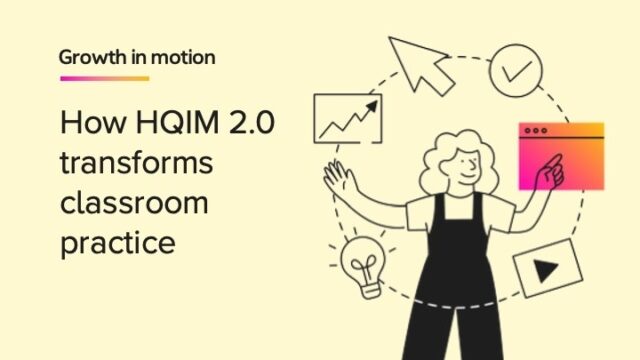
Accelerated learning may sound like a method for speeding through lessons to cover everything students didn’t learn in previous grades. It's not. Accelerated learning does not look back. It moves kids forward to tackle grade-level content, providing them with help when they need it. It’s not “just-in-case” remediation. It's “just-in-time” scaffolding.
Support might consist of small group instruction or one-on-one tutoring, using data to pinpoint the skills each kid needs to master grade-level concepts. Read on for research-backed techniques for catching kids up or moving them forward.
Accelerated-learning strategies
1. Accelerate. Don’t remediate
You should give kids grade-level work and help them when they need it. If a student is struggling to read a grade-level book, read it aloud or provide an audio version. You can also pair kids up to take turns reading and engage in discussion.
Other supports include graphic organizers; writing frames (for persuasive and expository writing); interactive read-alouds that include time for a think-pair-share or a turn-and-talk; translanguaging; math talk; and mixing in hands-on activities. These are just a few ways of moving students toward greater independence as they tackle grade-level content.
2. Practice makes progress
Don’t try to cram learning into a few days, or even a few weeks. Kids should be mastering skills every day, and over time. The key is to space practice out over multiple shorter sessions, rather than cramming it into one long session. Give students time to “forget” in-between sessions. This results in deeper learning when the information is encountered again. And remember: Not just any practice leads to mastery. Deliberate practice with feedback is critical. Students need to act on the feedback to achieve success.
3. Harness the power of tech
Technology motivates students, encouraging them to push through challenges. For instance, Waggle offers gamified math and ELA activities. Writable uses personalized feedback to guide students through the writing process. Digital tools can give teachers a quick snapshot of student progress: how well they're grasping concepts and where they need help. With this data, a teacher can differentiate instruction, reaching students across a range of academic experiences.
4. Do assessments, not too much
Some assessment is necessary to determine which students will need a little extra help, and which ones will need to be challenged. Formative assessments are low-stakes (no grades) and timely (taking place as students are learning). They are a good way to personalize instruction in the moment.
Interim ELA and math assessments help teachers identify which students have learning gaps and which are ready for more-advanced material. Interim benchmark assessments like HMH Growth Measure with Waggle are a good start.
Share accelerated learning strategies
What techniques do you use to catch students up or move them forward? We’d love to hear your ideas for accelerating learning for elementary, middle, or high school students. Reach out to us on Facebook, Instagram, or via email at shaped@hmhco.com.
***
Explore our evidence-based solutions, which include opportunities for intervention, assessment, and differentiated instruction.
This blog, originally published in 2021, has been updated for 2025.
Be the first to read the latest from HMH's blog, Shaped.












